I have a model which runs on different landscapes, once on both together and once on each separately. I would like to plot the results in violin plots, but I'd like to have both runs side by side in the same plot, and each landscape to have its own violin (so a collective 4 violins in 2 stacks). Example data:
df1 <- data.frame('means' = 1:6, 'landscape' = rep(c('forest', 'desert', 3)))
df2 <- data.frame('means' = rep(c(1,2), 3), 'landscape' = rep(c('forest', 'desert', 3)))
How I'd like the final product to look like (illustration in MS Paint and I'm a terrible artist):

where green is for forests and gold is got deserts.

